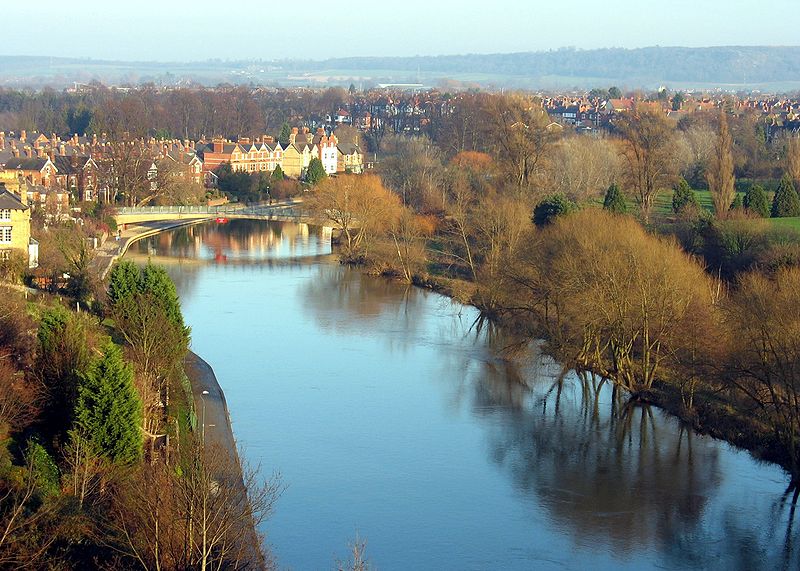The Marches

In the novel The Eyre Affair, Thursday Next frequently finds herself in conflict with Acheron Hades and in one instance is forced to chase him towards the Welsh border, saying “to the left and right of us and not more than half a mile distant, the broad expanse of the Severn blocked our route. Acheron was heading off to Wales and the Marches and there didn’t seem to be anything we could do about it” (Fforde 226). The Marches, also known as the Welsh Marches, are an area along the border between England and Wales. While there is no clear, legally defined area of the Marches today, the counties of Shropshire and Herefordshire are particularly considered to be part of the Marches and historically Cheshire, Gloucestershire, and some two-thirds of Wales were considered part of the Marches (“The Welsh Marches”).
The word march, in this sense, comes from a blending of the Old English mearc and the Anglo-Norman marche, itself from an earlier Frankish word, and means “a boundary, border, or frontier” (“march, n.3”). March is also closely related to the word mark, meaning “boundary, frontier, or limit,” which is a blend of the Old English mearc and the Old Danish mark and can still be found as parts of compound words such as Denmark, the Dane-border (“mark, n.1”). This area came to have this name after the Normans conquered England and sought to establish a firm boundary between their holdings and the independent Welsh kingdoms, thus establishing the Marcher Lords, whose estates were independent of the English crown’s direct legal control unlike feudal lords in the rest of England (“Monmouthshire”).
The Marches’ history as a violent, lawless borderland was referenced by A.E. Housman in his poem “The Welsh Marches,” writing “The flag of morn in conqueror’s state/Enters at the English gate:/The vanquished eve, as night prevails,/Bleeds upon the road to Wales” (44). The poem also touches on some of the same struggles that Thursday faces in The Eyre Affair. Throughout the novel Thursday’s involvement in the ongoing Crimean War comes up, in particular the affect that the war had on her personally and the fact that she wants the war to end despite the seeming decision by the military to ramp up fighting in the area. This is mirrored “The Welsh Marches” when Housman writes “In my heart it has not died,/The war that sleeps on Severn side;/They cease not fighting, east and west,/On the marches of my breast./Here the truceless armies yet/Trample, rolled in blood and sweat;/They kill and kill and never die;/And I think that each is I” (44-45). In a somewhat surprising connection, the fighting in “The Welsh Marches” takes place next to the River Severn, the exact river that prevents Thursday from continuing her pursuit of Acheron Hades (Fforde 226).
It is wonderful to see that the themes and locations found in a book obsessed with Victorian novels are mirrored in relatively obscure, late Victorian poem published 105 years apart.
Works Cited
Britannica, The Editors of Encyclopaedia. "Monmouthshire". Encyclopedia Britannica, 24 Aug. 2018, https://www.britannica.com/place/Monmouthshire. Accessed 16 Apr. 2022.
Fforde, Jasper. The Eyre Affair. Penguin, 2001.
Housman, A.E. A Shropshire Lad. Harrap, 1984.
"march, n.3." OED Online, Oxford University Press, March 2022, www.oed.com/view/Entry/113952. Accessed 16 Apr. 2022.
"mark, n.1." OED Online, Oxford University Press, March 2022, www.oed.com/view/Entry/114169. Accessed 16 Apr. 2022.
The River Severn, 2007, Wikimedia Commons, https://commons.wikimedia.org/wiki/File:SevernFromCastleCB.JPG. Accessed 16 Apr. 2022.
“The Welsh Marches.” Ludlow, https://www.ludlow.org.uk/marches.html. Accessed 16 Apr. 2022.
Coordinates
Longitude: -2.654418200000
